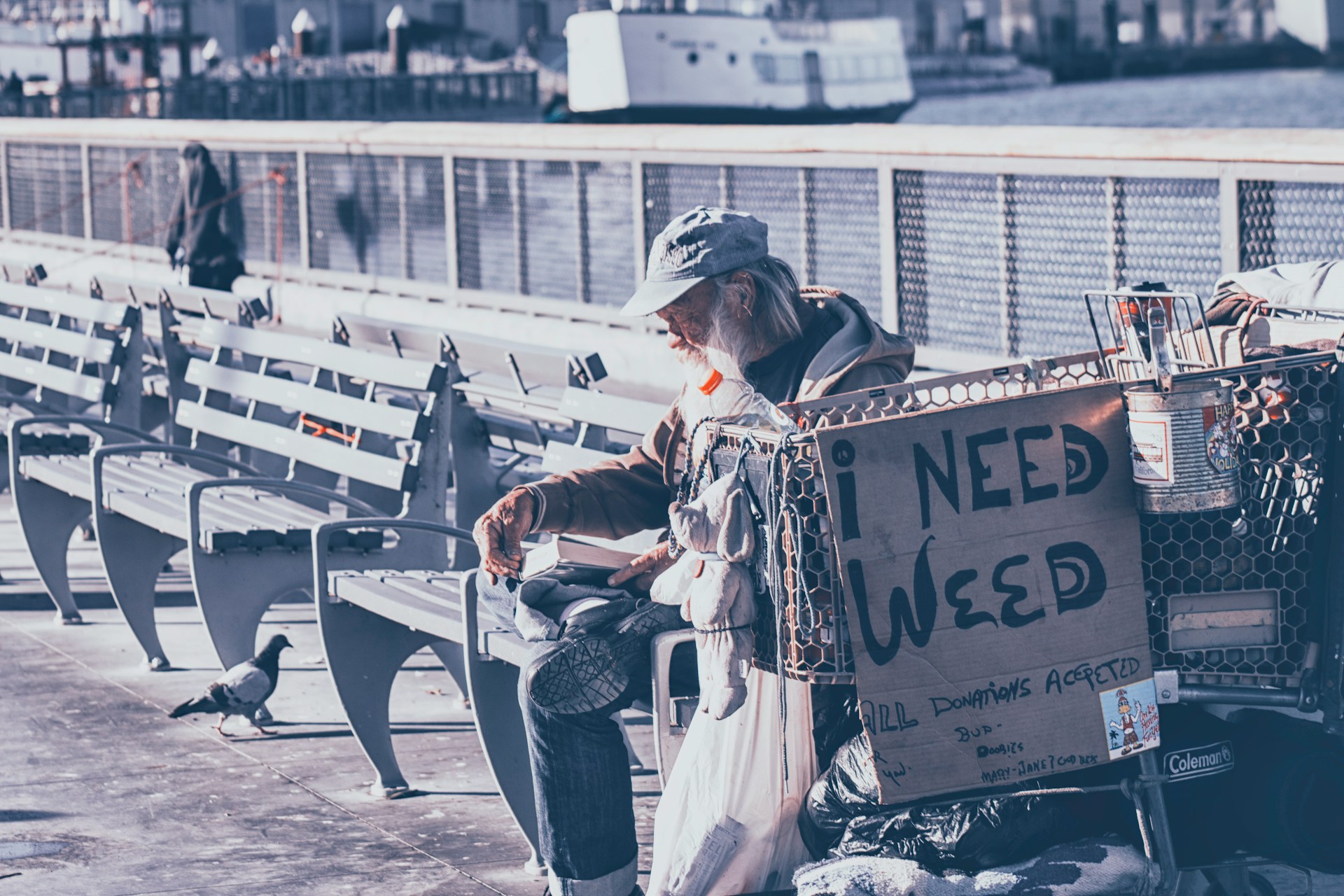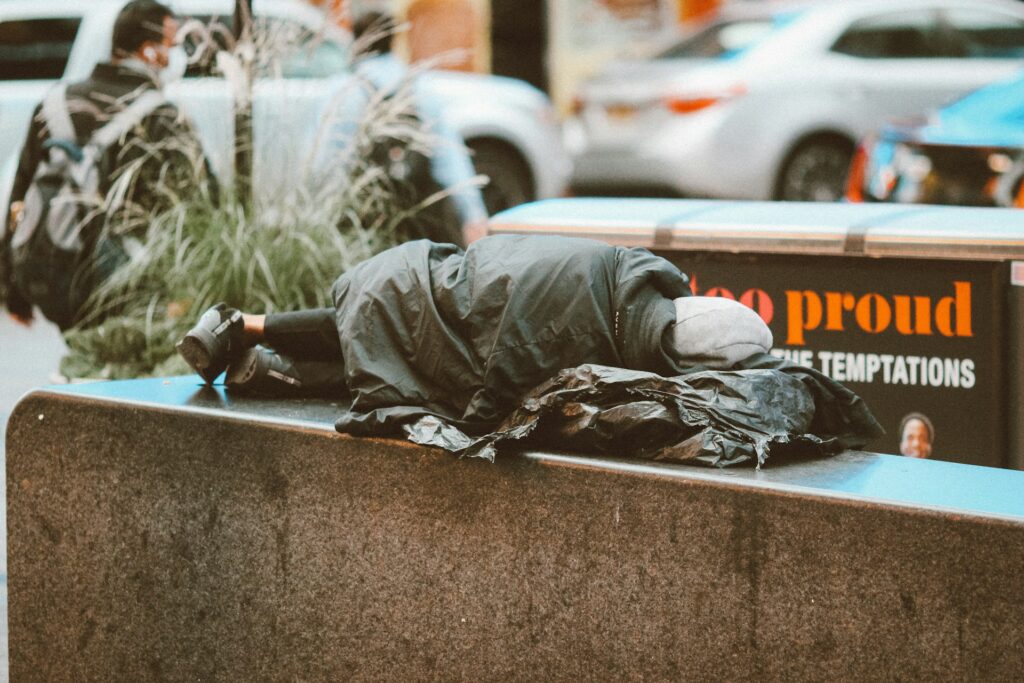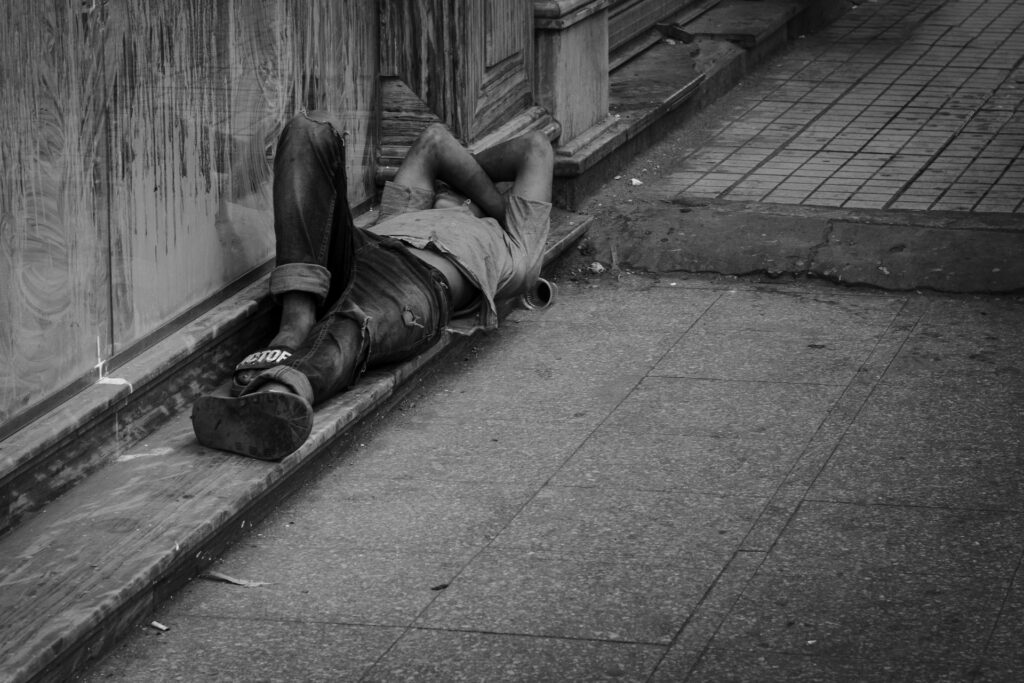Why Homelessness and Drug Addiction Often Rise Together—and How Recovery Starts

The connection between homelessness and drug addiction affects countless families, yet recovery becomes possible when people receive compassionate support early. People arriving at Sun Valley Rehab often share stories of instability, loss, and fear, but they also discover stability, structure, and genuine care that help them regain confidence. Many families want to understand why these two struggles appear together so often, and the truth is that the overlap stems from deeper factors like trauma, mental health issues, financial hardship, and untreated substance use. This issue touches people from every background, and it grows worse when resources feel out of reach. Recovery begins once someone feels safe enough to accept help, reconnect with treatment, and rebuild the foundation they lost along the way.
How Does Housing Instability Increase the Risk of Substance Use?
Unstable housing creates daily pressure that pushes people toward coping mechanisms that feel fast, numbing, and accessible during moments of crisis. Inpatient detox San Fernando Valley often serves people who never expected their lives to unravel until constant moves, eviction stress, or unsafe environments made them feel powerless. Housing instability amplifies vulnerability because it limits sleep, increases exposure to unsafe social circles, and removes basic routines that support mental health.

People facing drug abuse and homelessness rarely have predictable meals, secure places to rest, or consistent medical care, which makes cravings stronger and decision-making harder. Substance use temporarily blunts fear, exhaustion, and anxiety, so the pattern becomes self-reinforcing. Addiction then deepens the instability because it affects employment, relationships, and reliability, making it harder to keep a job or maintain a lease. Isn’t it clear how quickly this cycle traps people when stability disappears?
Why Do Small Instability Gaps Lead to Big Addiction Risks?
Short-term instability snowballs quickly into emotional overload, exhaustion, and desperate coping patterns. People living without a predictable shelter experience spikes in stress hormones that fuel cravings and impulsive behavior. These pressures turn housing instability into a major driver of early and chronic substance use.
- Nearly 40% of homeless adults report using substances to cope with fear, stress, or sleeplessness.
- People experiencing housing instability have 2–4x higher risk of developing a substance use disorder.
- Lack of sleep increases relapse risk by up to 35%, especially when someone is living outdoors.
- Individuals without stable housing are 3x more likely to engage in high-risk drug use behaviors.
What Happens When Addiction Makes It Harder To Maintain Stable Housing?
Addiction changes behaviors in ways that make housing unpredictable, fragile, and difficult to preserve. Relapse prevention program California interventions frequently describe how cravings, withdrawal symptoms, and drug-seeking behaviors disrupt routines that keep someone housed. Missed rent payments, job absenteeism, and untreated mental health conditions all create an unstable pattern that landlords and employers notice immediately.

Those living through drug addiction and homelessness often face eviction after only one crisis event, especially in cities with high demand for rental units. Addiction also fuels relationship breakdowns, leaving individuals without family support or temporary places to stay. Once sleeping in shelters or on the streets, substance use becomes easier to access and harder to avoid because stress increases dramatically. How can someone maintain employment when every day demands survival instead of recovery?
How Fast Does Addiction Disrupt Housing Security?
Substance use affects reliability, employment, and relationships long before visible homelessness emerges. Missed work shifts, untreated withdrawal, and financial strain create a cascade of events that make housing fragile.
- Roughly 25%–30% of evictions involve tenants with active substance use disorders.
- People with addiction face twice the unemployment rate of the general population.
- Loss of income increases homelessness risk by nearly 40% within one year.
- Addiction-related legal issues increase housing loss risk by 50% or more.
How Do Trauma And Mental Illness Increase Vulnerability To Both Issues?
Trauma disrupts the brain’s stress systems, making people more likely to turn to substances for relief when emotions feel unmanageable. Drug detox center Los Angeles teams often meet clients with histories of childhood neglect, abuse, violence exposure, or long-term PTSD symptoms. When trauma remains untreated, the nervous system stays in survival mode, pushing people toward drugs and homelessness as they try to regulate overwhelming fear, flashbacks, or emotional numbness.

People living with untreated bipolar disorder, schizophrenia, or severe depression also face a higher risk because these conditions complicate daily responsibilities and relationships. Homeless people and drugs become linked when individuals self-medicate symptoms because they lack access to consistent psychiatric care. Trauma and addiction feed each other, deepening the cycle over time. Doesn’t it make sense that healing must address mental health and safety at the same time?
Why Does Trauma Make Recovery So Much Harder?
Trauma rewires the brain’s stress, memory, and reward circuits. People with untreated PTSD or early childhood trauma often turn to substances to quiet overwhelming emotional storms, which worsens long-term housing stability.
- Up to 75% of homeless women** report past physical or sexual trauma.
- Roughly 50% of homeless adults** live with severe mental illness or active psychiatric symptoms.
- PTSD increases the risk of substance use disorder by up to 5x.
- Individuals with co-occurring disorders stay homeless twice as long on average.
How Does Chronic Stress From Poverty Deepen the Cycle Between Drugs And Homelessness?
Economic instability creates an environment where survival matters more than long-term planning or treatment engagement. Residential treatment Los Angeles providers often explain how poverty creates constant pressure through overdue bills, unsafe neighborhoods, and limited job opportunities. People experiencing homelessness and drug abuse statistics show that low-income communities face higher rates of both issues because financial stress erodes resilience.

When someone cannot afford rent, transportation, or health insurance, treatment becomes secondary to immediate survival needs. Poverty-related stress affects the brain’s reward system, making substances feel like the fastest way to escape emotional overload. People living in drug addiction and homelessness conditions rarely have access to stable routines, therapy, or medical support, which makes the cycle stronger. How can someone heal when every day feels like a battle to meet basic needs?
When Does Poverty Turn Into Crisis?
Economic pressure wears down decision-making, emotional regulation, and access to support systems. When every day becomes about survival, treatment becomes secondary and substance use becomes a coping mechanism that feels immediate and accessible.
- People below the poverty line have 3x higher addiction rates.
- Over 600,000 Americans experience homelessness nightly, largely driven by housing costs.
- Rent burdens above 50% of income triple the risk of unstable housing.
- Job loss increases homelessness risk by nearly 400% within two years.
Why Does Los Angeles Experience Such High Rates Of Overlap Between Housing Loss And Substance Use?
Los Angeles faces a unique combination of extreme rent costs, limited shelter space, and widespread fentanyl availability, all of which push the overlap between drugs and homelessness to some of the highest levels in the country. Drug rehab centers in Los Angeles CA often serve people who waited months for treatment openings because demand far exceeds capacity. Encampment sweeps disrupt stability, causing people to lose medications, identification documents, or harm-reduction supplies, which increases overdose risk.
Many individuals cycle between motels, vehicles, sidewalks, and temporary shelters because transitional housing programs have long waitlists. Homelessness and drug abuse rates rise when people cannot access care quickly, especially in cities where rent easily exceeds $2,500 even for small units. How can someone recover when every move creates more instability?
What Makes Los Angeles an Extreme Case Study?
LA combines soaring rent prices, scarce shelter beds, and widespread fentanyl infiltration. These structural issues push thousands into homelessness, where substance use risks escalate dramatically.
- LA County reports more than 75,000 homeless residents yearly.
- Median rent regularly exceeds $2,500–$3,000, even for modest apartments.
- Fentanyl contributes to over 60% of overdose deaths in the region.
- Transitional housing waitlists often exceed 3–6 months.
How Does Stigma Keep People From Asking For Help Before Crisis Hits?
Stigma isolates people long before addiction or homelessness becomes visible to others. Shame creates silence, secrecy, and avoidance that delay treatment until someone reaches a breaking point. Specialists who work in opioid addiction treatment Los Angeles CA, often describe how clients felt too embarrassed to admit their struggles because they feared judgment from family, employers, or healthcare providers. Those experiencing drugs and homelessness feel this stigma even more intensely because society often blames them for circumstances shaped by trauma, poverty, and mental health issues.

Stigma prevents people from seeking therapy, detox, or medical care because they fear being labeled unstable or irresponsible. This delay deepens dependence and increases the severity of withdrawal, cravings, and risky behavior. Isn’t it heartbreaking how silence pushes people deeper into crisis instead of toward help?
Why Does Shame Silence People Who Need Help the Most?
Stigma shapes behavior long before symptoms escalate. Fear of judgment, discrimination, or job loss keeps individuals from seeking detox or therapy, even when support could prevent homelessness or relapse.
- Nearly 90% of people with addiction avoid treatment due to shame or fear of judgment.
- Stigma delays treatment by an average of 4 years after symptoms begin.
- People facing homelessness experience the highest stigma levels in healthcare settings.
- Early treatment cuts relapse risk by up to 50%.
What Does Effective Treatment Look Like For People Facing Housing Instability And Addiction?
Successful treatment must address substance use and unstable housing simultaneously to break the cycle. Trauma-informed care helps clients process fear, shame, and past trauma without feeling judged or misunderstood. Drug addiction treatment programs often integrate psychotherapy, medication management, and structured routines that support emotional healing. People facing homelessness and drug abuse need dual diagnosis treatment because mental health and addiction feed each other when left untreated.
Wraparound services, case management, medical detox, and long-term monitoring all increase the chances of sustained recovery. Programs work best when they include transitional housing support that protects people from returning to unsafe environments. Doesn’t recovery feel more attainable when every layer of support builds stability instead of fear?
Why Do Integrated Programs Create the Best Outcomes?
Effective treatment must address substance use, mental health, housing, and trauma in one coordinated plan. Clients need stability across all areas, not just detox, to prevent returning to crisis conditions.
- Dual diagnosis treatment improves long-term stability by 60% or more.
- Trauma-informed care reduces treatment dropout rates by 30–40%.
- Stable transitional housing increases recovery retention by up to 80%.
- Wraparound services lower relapse rates by 25–30%.
Where Does Recovery Actually Begin For People Trapped In This Cycle?
Recovery begins once safety, stability, and supportive structure replace fear, exhaustion, and daily uncertainty. People who face drugs and homelessness often feel stuck in survival mode until consistent care resets their nervous system and gives them room to breathe again. Structured inpatient care provides medical oversight, therapy, predictable routines, and compassionate monitoring that stabilize someone who has lived under chronic stress.

Case management strengthens this progress by guiding people through documentation, housing applications, benefits, and appointments so they avoid destabilizing setbacks. Transitional housing, long-term therapy, and wraparound support reduce chaos and prevent old patterns from taking over again. Doesn’t healing become more realistic when the environment finally stops working against the person trying to recover?
When Does Real Change Become Possible?
Recovery becomes possible once individuals feel physically safe and emotionally supported. People who transition from crisis environments to structured care often stabilize faster than expected because stability quiets stress responses.
- Clients entering safe, structured environments improve detox outcomes by 30%.
- Consistent routines reduce cravings by 20–40%.
- Case-managed housing cuts emergency room visits by 50%.
- People in stable recovery programs maintain sobriety at twice the rate of those without support.
How Can People Break Free From Homelessness And Drug Addiction?
The link between homelessness and drug addiction becomes stronger when poverty, trauma, stigma, and instability converge, yet recovery starts once someone feels safe enough to seek help. People living through drug abuse and homelessness often need medical care, mental health treatment, transitional housing, and steady support before long-term change becomes possible. Healing grows when someone receives trauma-informed treatment and stable routines that reduce risk and rebuild confidence. Families frequently feel overwhelmed, but the first step can be as simple as encouraging a loved one to contact us for guidance. Doesn’t recovery become more achievable when no one has to face drugs and homelessness alone?
You Have Questions
We Have Answers
At Tranquility Recovery Center, we offer treatment for a wide range of addictions, including alcohol, opioids, prescription drugs, and illicit substances. Our team tailors each program to meet individual needs, focusing on both the physical and emotional aspects of recovery.
At Tranquility Recovery Center, we offer treatment for a wide range of addictions, including alcohol, opioids, prescription drugs, and illicit substances. Our team tailors each program to meet individual needs, focusing on both the physical and emotional aspects of recovery.
At Tranquility Recovery Center, we offer treatment for a wide range of addictions, including alcohol, opioids, prescription drugs, and illicit substances. Our team tailors each program to meet individual needs, focusing on both the physical and emotional aspects of recovery.